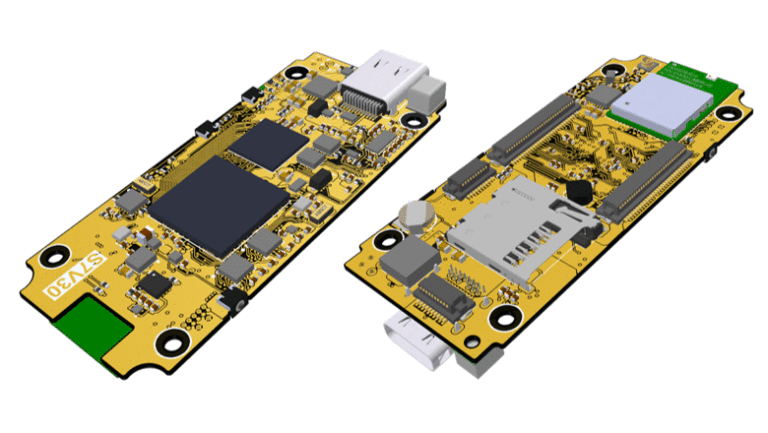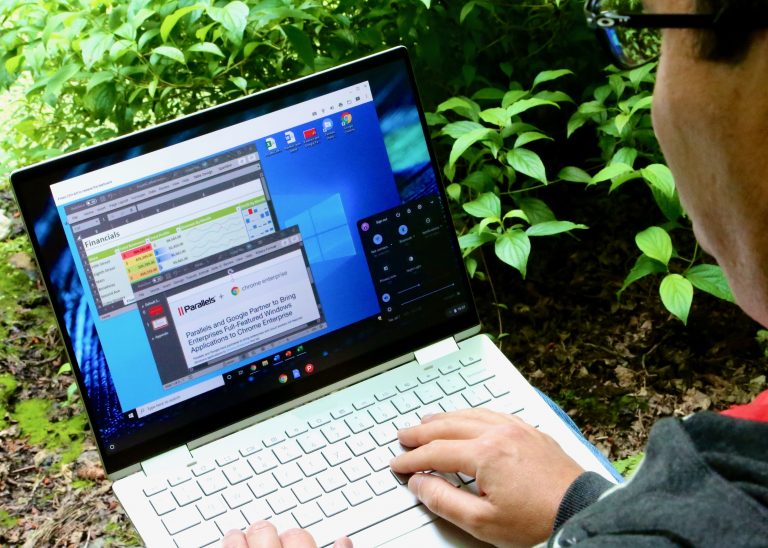how did you achieve this and what else did you run the games on?

KittenLabs had long been planning to test the capabilities of the TP-Link TL-WDR4900 router, since at the time it went on sale it could be considered a fairly powerful device. By the way, it was released in 2013. The main element here is the NXP/Freescale QorIQ P1014 chip, which KittenLabs explains is actually a 32-bit PowerPC e500v2 processor.
In order to use the eGPU, some cunning manipulations were needed. So, the craftsmen used a custom board, it was connected to PCIe contacts, which were also modified. They went from the processor to one of the Atheros chipsets. The tracks were cut and soldered to the contacts instead of the chipset. As a result, the authors of the project received a functioning PCIe 2.0 interface.

Then it was the turn of the software – the installed OpenWrt firmware did not want to work with the game, so we had to install Debian Linux, which we eventually left. The developers connected additional OS kernel modules to get support for the AMD chip.
Initially, experiments were carried out with an AMD Radeon RX 570 graphics processor, but in this case nothing worked. Therefore, we decided to choose an AMD Radeon HD 7470 with the old driver – and the system worked. Here are the results of the project team's activities.
Of course, there were many problems. One of them is the trouble-free launch of the game in the Debian Linux/PowerPC environment. The developers had to use reVC. This is a project whose goal is to obtain the source code of Grand Theft Auto: Vice City and fix its errors. The game engine was compiled for Windows, MacOS and GNU/Linux, and unofficial ports were also released for Nintendo Switch, PlayStation Vita and Nintendo Wii U.
In addition to bug fixes and adaptation for working on new platforms, the proposed edition added additional debugging tools, a rotating camera was implemented, XInput support was added, support for peripheral devices was expanded, scaled output on widescreen screens was provided, a map and additional options were added to the menu.

In general, the authors of “Vice City for a Router” decided to use this project. And they made the right decision, although they had to solve several more problems. One compilation for the router platform wasn't enough: There were glitches when interacting with non-player characters, and the project stalled for several months. The enthusiasts were helped by the author of the reVC port on Wii U and the library update with all the dependencies. As a result, rendering worked properly with full support for hardware acceleration.
The real breakthrough, so to speak, occurred after the update Mesa 3D graphics library, used by the router as part of the Linux installation. It wasn't easy, as a number of dependencies also needed to be updated, but once that was done, the player rendering began to work fine on real hardware, and with acceleration.
How did it all start?
We are talking about launching games on the most inappropriate platforms. Probably the leader is the well-known Doom. Well, the trigger was the launch of the game on an ATM back in 2014. This was done in a workshop; the experiments were not carried out on a working device somewhere in a store or bank office.
After this there were other projects. For example, here's an interesting use of an old piano as a character control tool. It was implemented by Polish indie developer Mikołaj Kaminski, better known as Sos Sosowski (author of the McPixel series of games).
They even launched the game on the Thumby keychain, a tiny console for which funds were raised through crowdfunding. And enthusiasts managed to run the game even on such a tiny device.
Another option to play with is an office phone, or more precisely, the Polycom VXX 600 model. It is equipped with a 12-button panel, a Home button, a volume control, and three buttons for muting the sound, using a speaker or a headset. In general, a fairly functional device. But its main advantage is the touch display, which allows you to control various applications.

It turned out that launching the game was not so easy; it took almost four years to implement this project. True, you shouldn’t think that all this time the enthusiast was trying to install Doom. Rather, he tried, it didn’t work, he took a break for an indefinite period, and then tried again.
And finally, we managed to launch this game on a printer, back in 2014. True, this version of the project was practically unplayable, since the hardware base was a Canon printer with a display of very poor quality (bad for the game, not for performing its functions, of course).
In general, very interesting projects – Vice City on a router, Doom on everything possible. If you witnessed an even more interesting project, when a game was launched on some unusual device, tell us about it in the comments.





